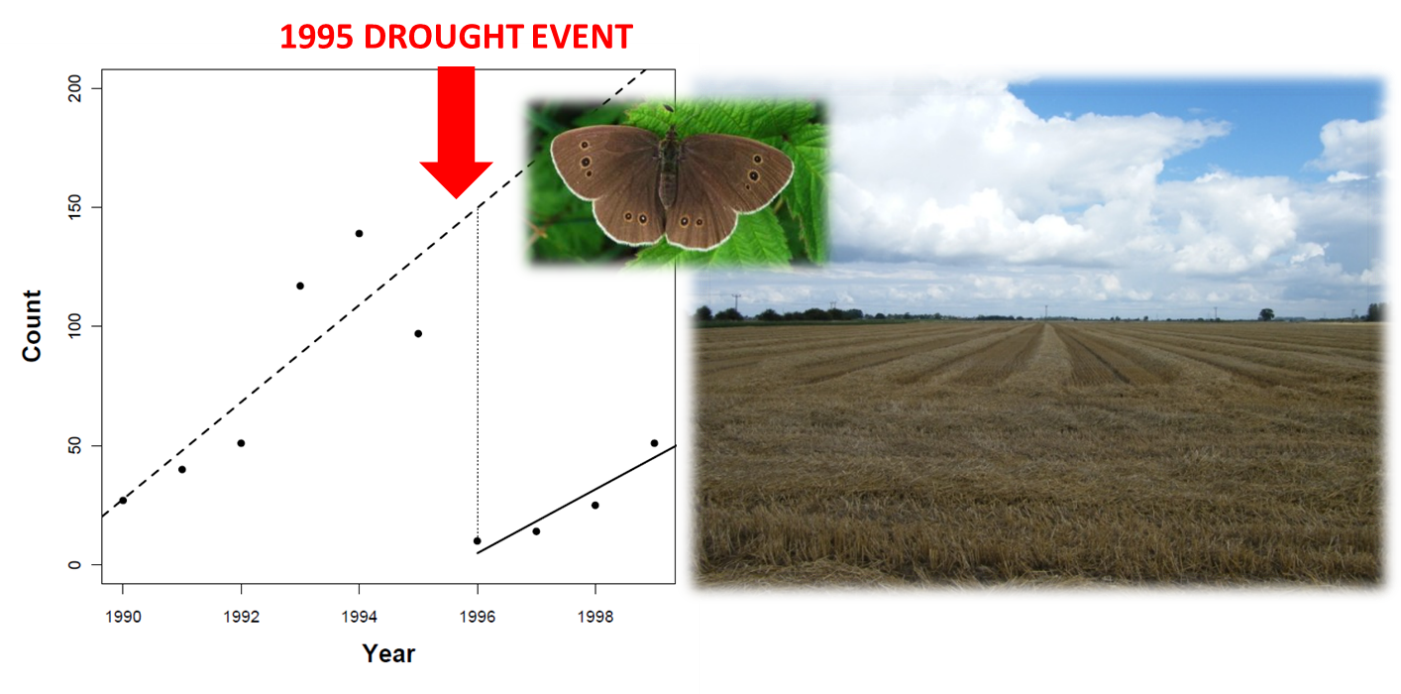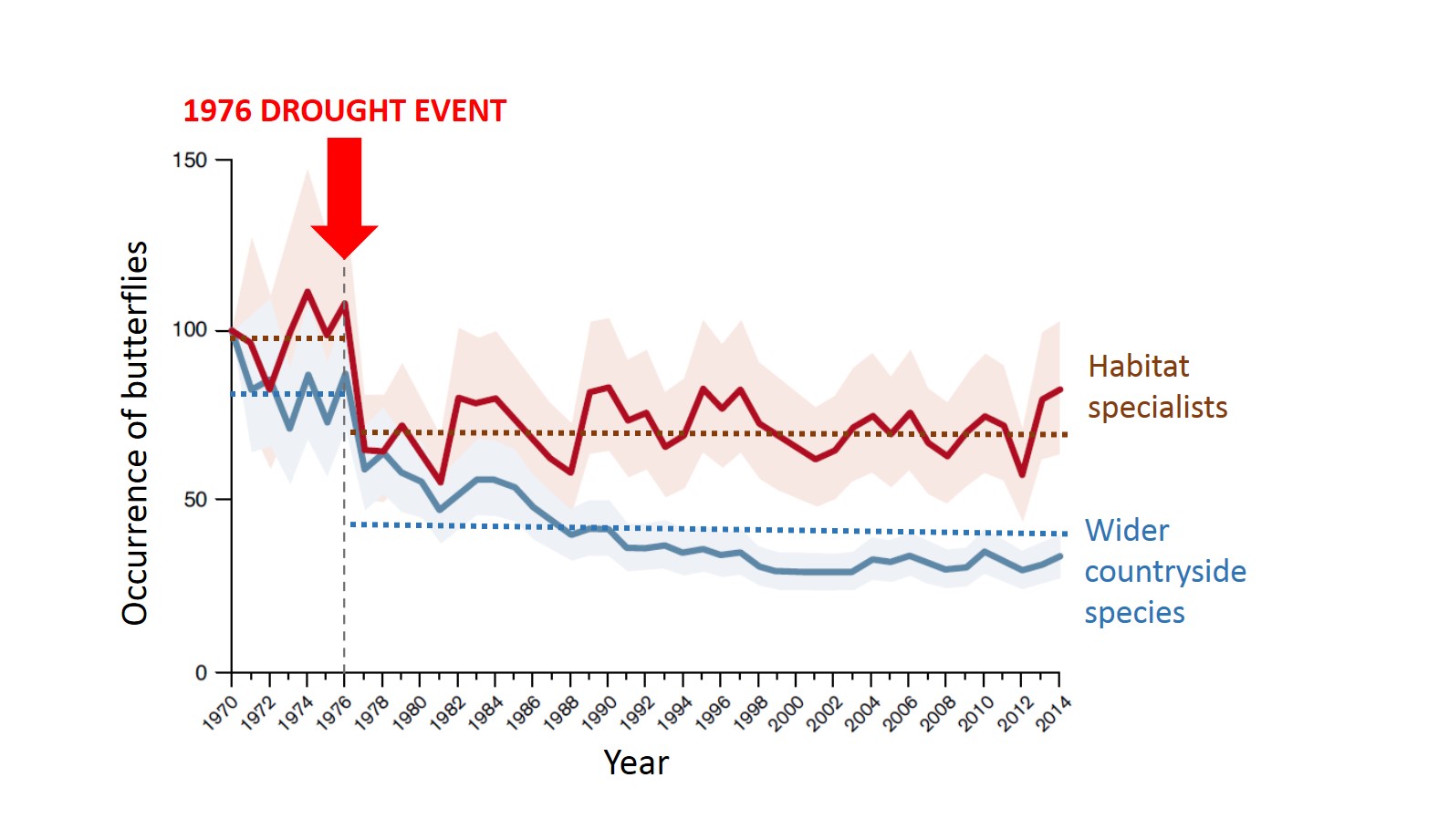This summer’s heatwave has us all wondering how to stay cool, but animals are facing the same issues as humans with fewer means of coping. Professor Tom Oliver is Professor of Applied Ecology at the University of Reading UK, and his research focuses on understanding the causes of changes to biodiversity to support environmental decision-making. Here he looks at the potentially worrying impact the drought conditions could have on wildlife in the UK.

With widespread reports of intense heatwaves and drought across the Northern hemisphere this summer, combined with our own personal observations of how everything is starting to look very parched, it is natural to wonder how drought is affecting our wildlife.
When the temperature heats up, we humans can take measures to reduce our exposure, such as heading down the shops to buy a fan, or even installing air conditioning. Yet, our wildlife has much less opportunity for such ‘learned’ adaptation to climate change.
That said, there are innate behaviours that can help wildlife to cope; for example many insects regulate their body temperatures by moving to cooler, moister habitats (e.g deep woodland or shady streams and ponds) when things get too hot. The food sources of these insects are also more likely to persist in such areas. So the existence of such ‘refuge’ habitats can be crucial in allowing species to persist under intense heat and drought events.
So what happens as we change our landscapes, and allow less land for these wildlife refuges? For example, if we focus on using land to produce as much food as possible without leaving space for nature, what are the consequences for our wildlife, especially when conditions get tough as in a drought year?
To answer such questions, long-term observations of species’ populations in different weather conditions and landscapes are invaluable. Enter the UK Butterfly Monitoring Scheme. This is one of the world’s longest-running species recording schemes with the same monitoring technique (the ‘Pollard walk’- named after scheme founder Ernie Pollard in 1976), and is now conducted at more than 1,000 sites each year.
Using data from such schemes, we can analyse how populations are affected by drought events, and whether population crashes are more severe in landscapes where there is less natural habitat left.
We conducted such research, in collaboration with several universities, the Centre for Ecology and Hydrology and the charity Butterfly Conservation. It turns out that, for butterflies, many populations crash in a drought event and the extent of these drought-induced population crashes vary between different landscapes. Population crashes are more severe in landscapes where natural habitat (such as woodland, meadow grassland, heathland) has been most fragmented.

Historically, in 1995, the UK was affected by a very hot dry spring and summer, and this caused the declines in several species that use moister habitats such as the Ringlet and Speckled Wood butterflies. However, other species were relatively unaffected in that year. What happens in a more extensive drought event?
To understand that, we have to look back to 1976 – one of the hottest, driest summers on record. Records of butterflies collated by volunteers have allowed estimates of national butterfly occurrence each year, prior to the arrival of the standardised UK Butterfly Monitoring scheme.
These data, published by Butterfly Conservation, show how across all 56 butterflies in the UK there is evidence of severe population crashes, which are especially marked for the habitat specialist species.

Crucially, even 40 years after this extreme drought event in 1976, populations do not seem to have recovered to their previous levels, even despite extensive conservation effort in the intervening period.
Following our recent understanding of how landscapes can mediate population crashes, we can speculate that the degradation of UK landscapes, that began during the agricultural intensification following the Second World War, was all the time increasing the fragility of wildlife. When the severe drought hit in 1976, this lack of resilience was realised as a ‘tipping point’ collapse in butterfly numbers.
All this leaves the worrying question of how our contemporary wildlife will cope with the drought of 2018 and the increasing frequency of future drought events expected under climate warming. One important lesson to learn is that how we manage our landscapes is crucially important in affecting the fates of species under such drought events.
We now know it is critically important to maintain extensive natural areas to provide refuges for drought-stricken populations, giving them the best chance of persisting under climate change.
Tom Oliver is an Associate Professor of Landscape Ecology at the University of Reading. He is Research Division Leader for their Ecology and Evolution Division and sits on the European Environment Agency scientific committee. He has previously blogged for Connecting Research on tracking the decline in genetic diversity in butterflies.
